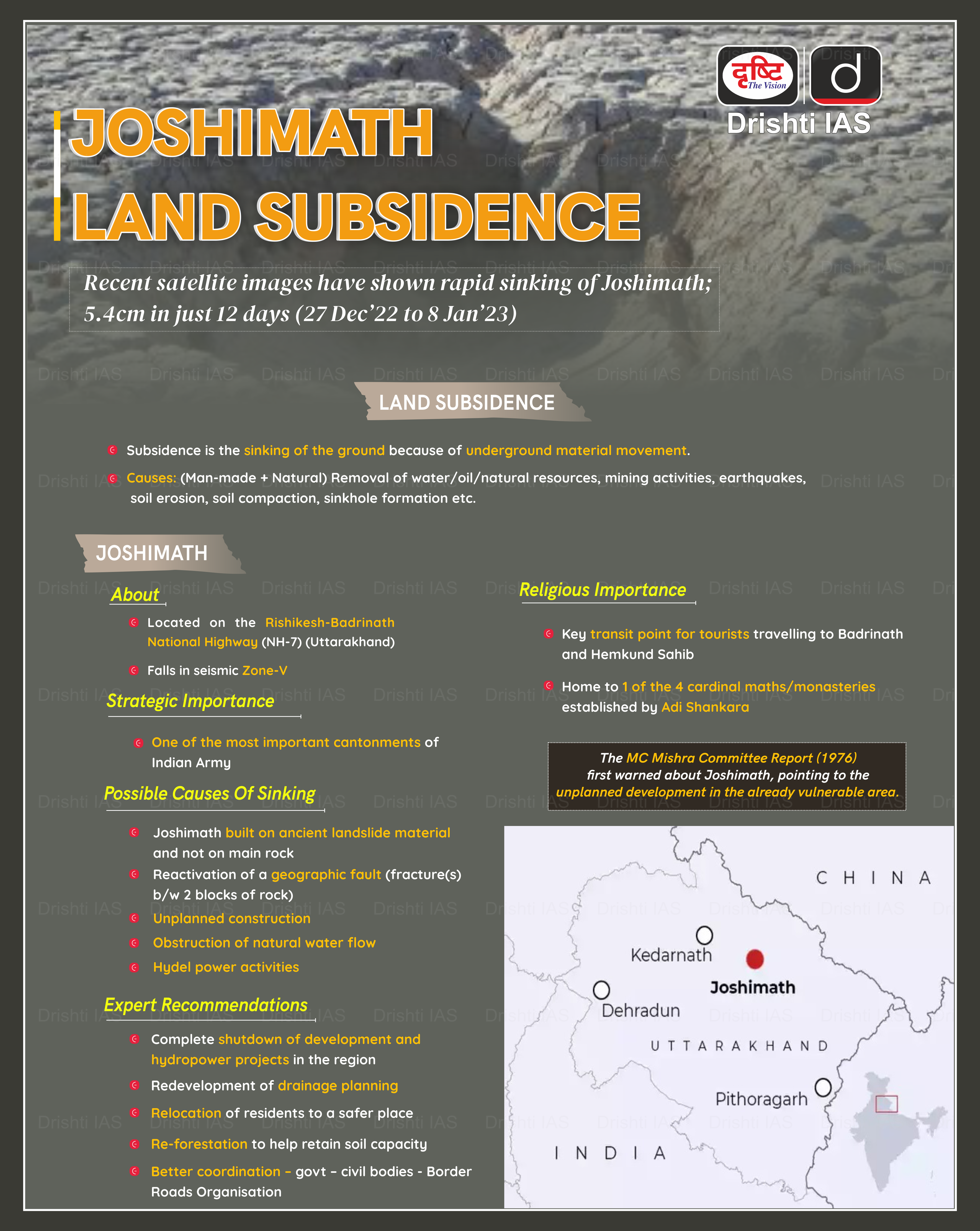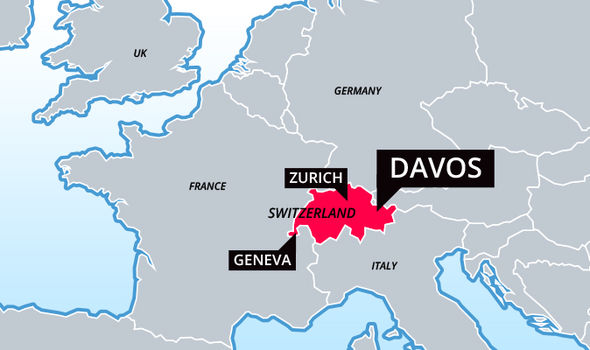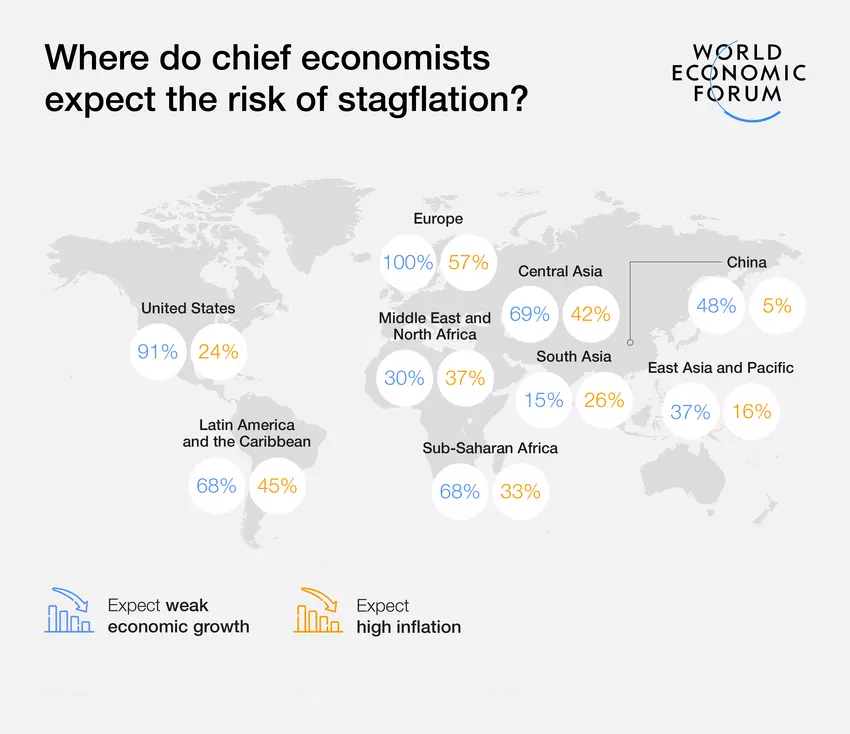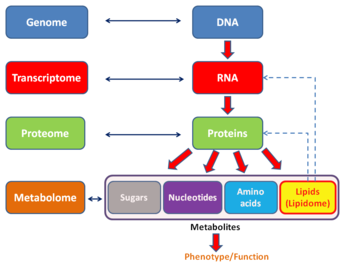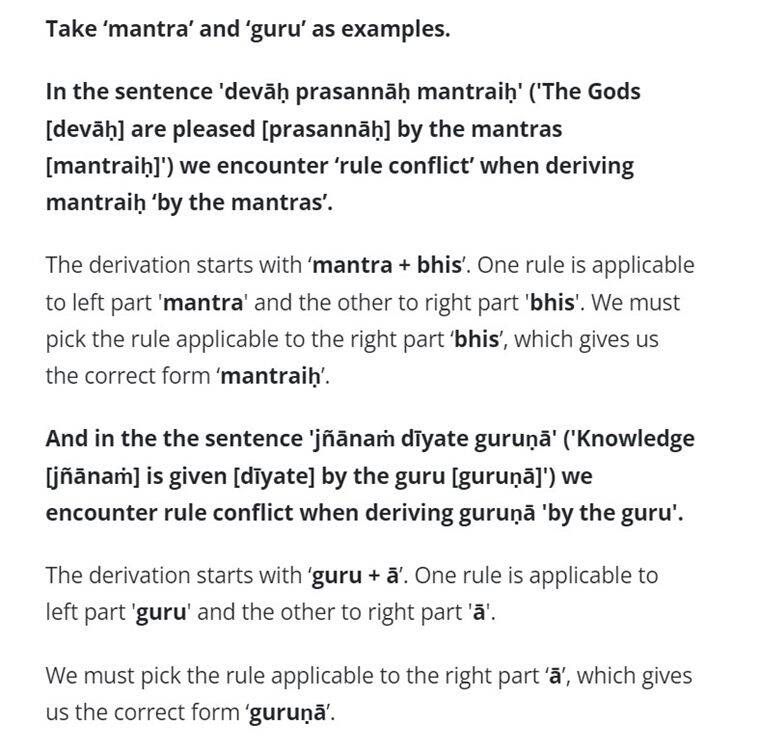Infographics
International Relations
Davos Summit 2023: WEF
Prelims: Chief Economists Outlook, Coalition of Trade Ministers on Climate, Giving to Amplify Earth Action.
Mains: Davos Summit 2023, World Economic Forum.
Why in News?
The 53rd edition of the annual World Economic Forum summit was held in Davos, Switzerland.
- Theme: Cooperation in a Fragmented World.
What are the Key Points of Davos Summit 2023?
- Coalition of Trade Ministers on Climate:
- A new Coalition of Trade Ministers on Climate launched, bringing together over 50 countries to boost international cooperation on climate, trade and sustainable development.
- Stakeholders across the world stressed the value of free trade. Even in the current global economic landscape marked by fragmentation, the free trade system, which has contributed to global economic growth and enhanced humanity’s freedom remains a global public good that can never be forsaken.
- Chief Economists Outlook:
- The Chief Economist's Outlook was launched, which struck a cautious tone, with two-thirds of those surveyed expecting a global recession this year 2023.
- It explores the key trends in the economic environment, including the prospects for growth, inflation and monetary and fiscal policy.
- It calls for the importance of reskilling in order to prepare current and future workforces for the green transition, the digital transition and the jobs of the future.
- Giving to Amplify Earth Action:
- A new initiative Giving to Amplify Earth Action (GAEA) was launched to leverage philanthropic capital to unlock funding for the climate crisis.
- It will leverage philanthropic capital to help generate the USD 3 trillion needed each year from public and private sources to tackle climate change and nature loss.
- Philanthropic giving totalled USD 810 billion in 2021, but just 2% went towards reducing emissions
- GAEA is a ground-breaking initiative supported by more than 45 major philanthropic, public and private sector partners.
- Global Collaboration Village:
- WEF has announced the rollout of its own metaverse platform, dubbed the Global Collaboration Village.
- The digital world, designed to look like the actual town of Davos in which the organization meets once every year, will supposedly allow for more efficient collaboration between world leaders.
What were the Indian Perspectives?
- Indian Participation:
- This year marks 36 years of the Forum’s collaboration with India.
- At the summit, India is represented by a high-level delegation which includes Union Ministers, Chief Ministers, Business leaders etc.
- Focus Area:
- India’s focus areas at WEF remained investment opportunities, infrastructural landscape and its inclusive & sustainable growth story.
- India’s Resilience and Economic Trajectory:
- India has crossed many barriers after the Covid-19 crisis and repositioned itself as the fastest-growing economy.
- Some prominent indicators for India to see robust economic growth include World Bank's latest India development update, which said India's real GDP growth is expected to be at 6.9 % in FY22-23 in comparison to 8.7 % in FY21-22.
- India@100: Realising the potential of a USD 26 trillion economy:
- The report, ‘India@100: Realising the potential of a USD 26 trillion economy’, was launched by India, on the sidelines of the summit.
- As per this report, India’s economy will reach USD 26 trillion by 2047, the 100th year of the country’s independence.
- It underscores the growth trajectory of the Indian economy, which is projected to be the highest for any large economy over the coming decades.
Note: Situated on the Landwasser River, in the Rhaetian Alps, eastern Switzerland, Davos is a resort town consisting of two villages, Davos-Platz and Davos-Dorf.
What is World Economic Forum?
- About:
- The World Economic Forum (WEF) is a Swiss nonprofit foundation established in 1971, based in Geneva, Switzerland.
- Recognized by the Swiss authorities as the international institution for public-private cooperation.
- Mission:
- Committed to improving the state of the world by engaging business, political, academic, and other leaders of society to shape global, regional, and industry agendas.
- Founder and Executive Chairman: Klaus Schwab.
- Some major reports published by WEF are:
- Energy Transition Index.
- Global Competitiveness Report.
- Global IT Report
- WEF along with INSEAD, and Cornell University publishes this report.
- Global Gender Gap Report.
- Global Risk Report.
- Global Travel and Tourism Report.
UPSC Civil Services Examination, Previous Year Questions (PYQs)
Q1. Which of the following gives ‘Global Gender Gap Index’ ranking to the countries of the world? (2017)
(a) World Economic Forum
(b) UN Human Rights Council
(c) UN Women
(d) World Health Organization
Ans: (a)
Q2. Who among the following is the founder of World Economic Forum? (2009)
(a) Klaus Schwab
(b) John Kenneth Galbraith
(c) Hobert Zoellick
(d) Paul Krugman
Ans (a)
Q3. The Global Competitiveness Report is published by the (2019)
(a) International Monetary Fund
(b) United Nations Conference on Trade and Development
(c) World Economic Forum
(d) World Bank
Ans: (c)


Science & Technology
ChatGPT and Associated Ethical Concerns
For Prelims: Artificial Intelligence, ChatGPT, Reinforcement Learning from Human Feedback (RLFH), Phishing Email, Plagiarism.
For Mains: Significance of ChatGPT as per and ethical concerns associated with it.
Why in News?
Recently, OpenAI (AI research and deployment company) opened its most recent and powerful AI chatbot, ChatGPT, to users to test its capability.
What is ChatGPT?
- About:
- ChatGPT is a variant of GPT (Generative Pre-trained Transformer) which is a large-scale neural network-based language model developed by OpenAI.
- GPT models are trained on vast amounts of text data to generate human-like text.
- It can generate responses to a wide range of topics, such as answering questions, providing explanations, and engaging in conversations.
- In addition to being able to "admit its mistakes, challenge false premises, and refuse unsuitable requests," the ChatGPT can also "answer follow-up questions."
- The chatbot was also trained using Reinforcement Learning from Human Feedback (RLHF).
- Limitations:
- The chatbot displayed clear racial and sexist biases, which remains a problem with almost all AI models.
- The chatbot gives answers which are grammatically correct and read well– though some have pointed out that these lack context and substance, which is largely true.
- ChatGPT occasionally produces inaccurate information and that its knowledge is restricted to global events that occurred before 2021.
What are the Ethical Concerns Associated with It?
- Malicious and Dangerous Coding: Some users have been experimenting with the chatbot's potential to carry out malicious actions. It has been claimed by several users that malicious and dangerous coding is generated by the Chatbot despite their claims to be amateurs.
- Generation of Phishing Email: ChatGPT is set up to reject requests to write phishing emails or malicious code but in actual sense ChatGPT is producing an outstanding phishing email.
- Creation of Biased Data/information: One concern is the potential for bias in the generated code, as the training data used to create the code generator may contain biases that are reflected in the generated code.
- Curtailing the Job Opportunity: There is a concern that the use of code generators could lead to the loss of jobs for human programmers.
- Plagiarism Chokepoint: Plagiarism in academics is not a new issue, but ChatGPT has altered how AI is utilized to produce original writing. It is difficult to identify plagiarized information as a result. Teachers and academicians have also expressed concerns over ChatGPT’s impact on written assignments.
Way forward
- Improving its ability to understand and respond to context, such as being able to maintain a conversation on a specific topic or understanding the tone and intent of a message.
- Increasing its knowledge base and ability to generate more accurate and informative responses.
- Developing more advanced language generation capabilities, such as being able to write coherent and persuasive essays or generate creative and engaging fiction.
- Improving its ability to understand and respond to different languages and dialects.
- Developing more advanced interactive capabilities such as handling multiple tasks and engaging in more complex conversations.
UPSC Civil Services Examination, Previous Year Question (PYQ)
Q1. With the present state of development, Artificial Intelligence can effectively do which of the following? (2020)
- Bring down electricity consumption in industrial units
- Create meaningful short stories and songs
- Disease diagnosis
- Text-to-Speech Conversion
- Wireless transmission of electrical energy
Select the correct answer using the code given below:
(a) 1, 2, 3 and 5 only
(b) 1, 3 and 4 only
(c) 2, 4 and 5 only
(d) 1, 2, 3, 4 and 5
Ans: (b)


Governance
Regulating Promotions on Social Media
For Prelims: Social Media, Endorsement Guidelines, Consumer Protection Act, Cybersecurity, Hate Speech, Fake Advertisement, Data Privacy.
For Mains: Extent of Social Media in India, Challenges Related to Social Media.
Why in News?
The Centre has released endorsement guidelines for celebrities and social media influencers that mandates compulsory disclosure of monetary or material benefits of a product or a brand they are promoting through their social media platforms.
What is the New Guideline for Enforcement on Social Media?
- Disclosure Norms:
- Disclosures must be prominently and clearly displayed in the endorsement and terms such as ‘advertisement’, ‘sponsored’ or ‘paid promotion’ should be used for all sorts of endorsements.
- It aims to ensure that individuals do not mislead their audiences through unfair trading practices when endorsing products or services and that they are in compliance with the Consumer Protection Act 2019 and any associated rules or guidelines.
- Disclosures should not be mixed with a group of hashtags or links. Also, in the case of a live stream, disclosures should be displayed continuously and prominently during the entire stream on social media.
- Penalty:
- If there are any violations, the penalty prescribed for misleading advertisements under the Consumer Protection Act 2019 will be applicable.
- In that case, the Central Consumer Protection Authority (CCPA) can impose a penalty of up to ₹ 10 lakh on manufacturers, advertisers and endorsers and for repeated offences, a penalty of up to ₹ 50 lakh can be imposed.
- The CCPA can also prohibit the endorser of a misleading advertisement from making any endorsement for up to one year and for subsequent contravention, prohibition can extend up to three years.
What is the Extent of Consumption of Social Media in India?
- Extent of Social Media in India:
- According to the Global Statistics, in India, the number of social media users is growing at a steady rate of 467 million in 2022 due to deep penetration of internet connectivity among people.
- Also, overall the number of Internet users in India has grown to a whopping 658 million, which is roughly 47% of the total population of India.
- According to the Global Statistics, in India, the number of social media users is growing at a steady rate of 467 million in 2022 due to deep penetration of internet connectivity among people.
- Benefits of Social Media:
- Democratization of Information: Social media is allowing the democratization of knowledge and broader communication. Billions of netizens around the world now feel empowered to bypass traditional curators of information.
- They have also become creators and disseminators of content, not just consumers of it.
- Direct Interaction with Government: Today social media has empowered common people to directly interact with the government and avail government services directly.
- Common people tagging Railway and other ministries and the agencies responding to them is common news these days.
- Promote Creativity and Self-expression: Social media provides a platform for users to share their ideas, thoughts, and creativity with the world.
- Increased Customer Engagement: Social media allows businesses to engage with their customers in a way that was not possible before, allowing for more personalized and effective customer service.
- Social media is a cost-effective way for businesses to market and advertise their products and services.
- Democratization of Information: Social media is allowing the democratization of knowledge and broader communication. Billions of netizens around the world now feel empowered to bypass traditional curators of information.
- Challenges Related to Social Media:
- Misleading Advertising: Social media platforms are often used to advertise products and services, but some businesses use misleading or false advertising, which is an unfair trading practice.
- Social media platforms are also used to post product reviews by influencers, but some reviews may be fake or biased, which can be misleading to consumers and also a violation of fair-trading practices.
- Cyberbullying and harassment: Social media has become a breeding ground for cyberbullying and harassment, leading to mental health issues and even suicide in some cases.
- Privacy Concerns: Social media platforms collect and store large amounts of personal data, raising concerns about privacy and data security.
- Lack of Regulation and Polarisation: Social media platforms operate with little regulation, which can lead to harmful content, fake news, and hate speech.
- Also, social media can create an echo chamber effect where people are exposed to similar views and opinions, causing polarization in society.
- Misleading Advertising: Social media platforms are often used to advertise products and services, but some businesses use misleading or false advertising, which is an unfair trading practice.
Way Forward
- Social Awareness: A digitally literate country is the need of the hour. Responsible social media use must be taught at every school and college in the country and especially in the rural areas where people can be easily manipulated.
- Stricter Content Moderation: Social media companies will need to implement stricter content moderation policies and more robust systems for identifying and removing harmful content.
- This would help in reducing the spread of misinformation, hate speech, and other harmful content on their platforms.
- A Dedicated Social Media Policy: A holistic policy to regulate social media by creating accountability of social media platforms to not target youth as consumers or future consumers.
- This will make the algorithms more attuned towards adults rather than youth.
UPSC Civil Services Examination Previous Year Question:
Q. What are social networking sites and what security implications do these sites present? (2013)


Important Facts For Prelims
Pan-Transcriptome
Why in News?
Recently, researchers at the University of California, Santa Cruz, have proposed a “Pan-transcriptome” which combines a transcriptome and a pan-genome.
- Mapping transcriptome (complete set of RNA molecules) allows researchers to better understand an individual’s gene expression.
What is a ‘Pan-transcriptome’?
- Pan-transcriptome is a reference that contains genetic material from a cohort of diverse individuals, rather than just a single linear strand.
- The pan-transcriptome builds on the emerging concept of “pan-genomics” in the genomics field.
- Typically, when evaluating an individual’s genomic data for variation, scientists compare the individual’s genome to that of a reference made up of a single linear strand of DNA bases.
- A "pan-transcriptome" is a combination of a transcriptome and a pan-genome.
- Transcriptome:
- Pan-genome:
- A pan-genome is a reference that contains genetic material from a diverse group of individuals, rather than just a single linear strand.
- Using a pangenome allows researchers to compare an individual’s genome to that of a genetically diverse cohort of reference sequences all at once, sourced from individuals representing a diversity of biogeographic ancestry.
What is the Use of Pan-transcriptome?
- Discovery of New Genes: A pan-transcriptome can be used to identify novel genes that may not have been detected through traditional genome sequencing methods.
- Regulating Gene Expression: The Pan-transcriptome can change in response to environmental or physiological conditions, and it plays a key role in regulating gene expression.
- Characterizing Genetic Diversity: Pan-transcriptomes can be used to identify genetic variations within and between different populations of organisms.
- This can provide insights into the evolution and adaptation of different species.
What is RNA Mapping?
- About:
- RNA mapping is a technique used to identify and map the location of RNA molecules within a cell or tissue.
- It is typically used to study the expression and localization of different types of RNA, including messenger RNA (mRNA), ribosomal RNA (rRNA), and transfer RNA (tRNA).
- Method for RNA mapping:
- In- situ hybridization (ISH):
- In- situ hybridization (ISH) allows researchers to see where a specific RNA is located within a cell or tissue, and can provide insights into the function of that RNA.
- RNA-seq (RNA sequencing):
- It allows for the simultaneous analysis of thousands or even millions of RNA molecules in a sample.
- RNA-seq can be used to generate a detailed picture of the transcriptome, including the abundance and location of different RNA molecules.
- In- situ hybridization (ISH):
- Uses: This information can be used to study-
- Gene expression patterns
- Identify novel transcripts
- Detect genetic variations
UPSC Civil Services Examination, Previous Year Questions (PYQs)
Q. In the context of the developments in Bioinformatics, the term ‘transcriptome’, sometimes seen in the news, refers to (2016)
(a) a range of enzymes used in genome editing
(b) the full range of mRNA molecules expressed by an organism
(c) the description of the mechanism of gene expression
(d) a mechanism of genetic mutations taking place in cells
Ans: (b)


Important Facts For Prelims
Panini’s Ashtadhyayi & Grammar’s Greatest Puzzle
Why in News?
Recently, a Cambridge scholar Dr Rishi Rajpopat’s has claimed to have solved Sanskrit’s biggest puzzle—a grammar problem found in the ‘Ashtadhyayi’.
What is Ashtadhyayi?
- Written more than 2,000 years ago, Ashtadhyayi or ‘Eight Chapters', is an ancient text written by the scholar Panini towards the end of the 4th century BC.
- It is a linguistic text that set the standard for how Sanskrit was meant to be written and spoken.
- It delves deep into the language’s phonetics, syntax and grammar, and also offers a ‘language machine’, where one can feed in the root and suffix of any Sanskrit word, and get grammatically correct words and sentences in return.
- The Ashtadhyayi laid down more than 4,000 grammatical rules.
- Later Indian grammars such as the Mahabhasya of Patanjali (2nd century BC) and the Kasika Vritti of Jayaditya and Vamana (7th century AD), were mostly commentaries on Panini.
What was the Puzzle?
- Confusing Rules:
- In Ashtadhyayi, there were two or more of the rules of Grammar that could apply at the same time, causing confusion.
- To resolve this, Panini had provided a ‘meta-rule’ (a rule governing rules), which had historically been interpreted as- In the event of a conflict between two rules of equal strength, the rule that comes later in the serial order of the ‘Ashtadhyayi’ wins.
- However, it kept producing exceptions, for which scholars had to keep writing additional rules. This is where Dr Rishi Rajpopat’s discovery came through.
- Solution:
- The Scholar took a simpler approach, arguing that the meta-rule has been wrongly interpreted throughout history; what Panini actually meant was that for rules applying to the left and right sides of a word, readers should use the right-hand side rule.
- Using this logic, Dr Rajpopat found that the ‘Ashtadhyayi’ could finally become an accurate ‘language machine’, producing grammatically sound words and sentences almost every time.
- Significance:
- The discovery now makes it possible to construct millions of Sanskrit words using Panini’s system—and since his grammar rules were exact and formulaic, they can act as a Sanskrit language algorithm that can be taught to computers.
Who was Panini, the Father of Linguistics?
- Panini probably lived in the 4th century BC, the age of the conquests of Alexander and the founding of the Mauryan Empire, even though he has also been dated to the 6th century BC, the age of The Buddha and Mahavira.
- He likely lived in Salatura (Gandhara), which today would lie in north-west Pakistan, and was probably associated with the great university at Taksasila, which also produced Kautilya and Charaka, the ancient Indian masters of statecraft and medicine respectively.
- By the time Panini’s great grammar, the ‘Ashtadhyayi’ was composed, Sanskrit had virtually reached its classical form — and developed little thereafter.
- Panini’s grammar, which built on the work of many earlier grammarians, effectively stabilised the Sanskrit language.
- The earlier works had recognised the root as the basic element of a word, and had classified some 2,000 monosyllabic roots which, with the addition of prefixes, suffixes and inflexions, were thought to provide all the words of the language.


Important Facts For Prelims
Indian Star Tortoise
Why in News?
A new study on the Indian Star Tortoise (Geochelone elegans) has found that illegal trade and unscientific translocations are causing major losses to the species' genetic diversity and habitat.
- The research calls for proper conservation strategy to combat the fragmented distribution and recommends intensive genetic screening of the species to implement scientific breeding.
What are the Key Facts about Indian Star Tortoise?
- Habitat:
- Indian star tortoises are found across the Indian subcontinent, more specifically, in the Central and Southern parts of India, in West Pakistan and in Sri Lanka.
- It is typically found in dry, open habitats such as scrub forests, grasslands, and rocky outcroppings.
- Threat:
- The species is facing twin challenges of a threat to its habitat at one level and loss of its genetic diversity at the other.
- Their highly fragmented habitat of the species is greatly influenced by an increased level of urbanization and agricultural practices.
- Due to subsequent hybridisation of these species over the years, Indian star tortoises have lost genetic diversity.
- Also, according to the Wildlife Crime Control Bureau, 90% of the trade of Star Tortoise occurs as part of the international pet market.
- The species is facing twin challenges of a threat to its habitat at one level and loss of its genetic diversity at the other.
- Protection Status:
- IUCN Red List: Vulnerable
- Wild Life Protection Act 1972: Schedule IV
- Schedule IV: This list is for species that are not endangered. It includes protected species but the penalty for any violation is less compared to the Schedules I and II.
- Convention on International Trade in Species (CITES): Appendix I
UPSC Civil Services Examination, Previous Year Question (PYQ)
Q. Consider the following: (2013)
- Star tortoise
- Monitor lizard
- Pygmy hog
- Spider monkey
Which of the above are naturally found in India?
(a) 1, 2 and 3 only
(b) 2 and 3 only
(c) 1 and 4 only
(d) 1, 2, 3 and 4
Ans: (a)


Rapid Fire
Rapid Fire Current Affairs
MoU Between IREDA & MNRE
Recently, the Indian Renewable Energy Development Agency Ltd. (IREDA) signed a Memorandum of Understanding (MoU) with the Ministry of New and Renewable Energy (MNRE), Government of India (GoI), setting an annual performance target for the year 2022-23.
The GoI has also set various performance-related key parameters such as Return on Net Worth (RoNW), Return on Capital Employed (ROCE), Non-Performing Assets (NPA) to Total Loans, Asset Turnover Ratio and Earning Per Share (EPS), etc.
Return on Equity (RoE) or RoNW: The amount of profit or earnings a company generates on the sheer strength of its shareholders’ equity.
ROCE: It refers to a financial ratio that can be used to assess a company's profitability and capital efficiency.
Asset Turnover Ratio: It measures the value of a company's sales or revenues relative to the value of its assets.
EPS: It is calculated as a company's profit divided by the outstanding shares of its common stock.
Read More: Indian Renewable Energy Development Agency Ltd. (IREDA), Ministry of New and Renewable Energy (MNRE)
Caste Census in Bihar
Recently, the Supreme Court dismissed petitions challenging the Bihar government’s decision to conduct a caste survey in the state. Petitioners claimed that it was a census and that the state government had no power to make any laws regarding it. The subject of a census falls in the Union list and only Parliament can legislate on it.
The caste census is under the administrative control of the Ministry of Home Affairs: Registrar General of India (RGI) and Census Commissioner of India.
The origin of the Census in India goes back to the colonial exercise of 1881. Census has evolved and been used by the government, policymakers, academics, and others to capture the Indian population, access resources, map social change, delimitation exercises, etc. The Census provides a portrait of the Indian population, while the Socio-Economic and Caste Census (SECC) is a tool to identify beneficiaries of state support.
Read More: Caste Census, Socio-Economic and Caste Census (SECC)
Hakku Patra
Recently, the Prime Minister of India symbolically distributed Hakku Patra (land title deeds) to five families of the Banjara (Lambani) community, a nomadic Scheduled Caste group, at an event organised by the state Revenue Department in Karnataka.
A title deed is a property ownership document, and the bearer of the document owns the land. The title deeds enable owners to avail of bank loans with the documentation. The government will also grant them the right to buy or sell land on which the title deed has been granted.
Read More: Banjara, Nomadic Tribes
Caller Name Presentation (CNAP)
According to the Telecom operators, a proposal by the Telecom Regulatory Authority (TRAI) of India to display callers’ names may result in privacy implications. The proposal, Caller Name Presentation (CNAP), will also be difficult to execute technically since many phones in the Indian market may not support it.
CNAP will allow users to know the identity of the person calling them. If people are aware of the person who is calling them, they can make an informed choice about those calls. Moreover, such a feature could potentially help in curbing harassment and other spam calls.
Currently, there are some applications that offer a similar service. However, all of them are third-party apps and depend on crowd-sourced data. There is no unifying solution offered by telecom operators.
Read more: Telecom Regulatory Authority (TRAI), Caller Name Presentation (CNAP)



